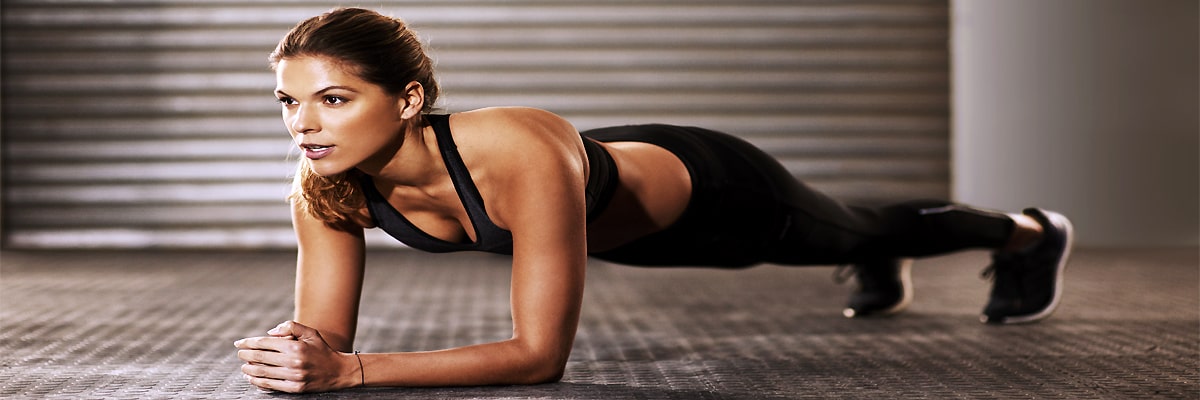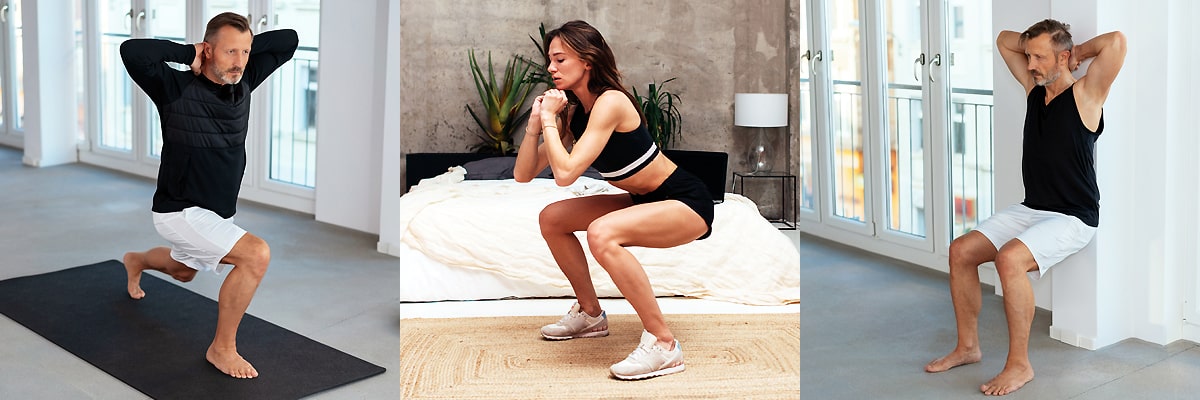How do I get fit for the winter season?
Are you already fit for the winter season? 💪🏻❄️⛷️ Now that the first snow has fallen in the higher-altitude ski areas, many winter sports enthusiasts are feeling a little nervous again. The hotel room or holiday apartment is reserved and the ski and snowboard equipment is taken to the trusted sports dealer for service before the winter season. To save on these service costs and also enjoy the latest models in winter sports on the slopes, it’s best to rent your skis or snowboards online via SNOWELL. This not only saves you the bulky transport, but also a lot of money.
However, before you really hit the slopes, it’s high time to do something for your fitness. Many winter sports athletes sustain injuries that could easily have been prevented with targeted training in advance. You’ve probably already started your training. If not, we have put together some tips & tricks for you.
Train your endurance
You can train your endurance, for example, by running or cycling. However, if you’re not a fan of jogging or cycling, you can also go for brisk walks or swim a few laps regularly. If you like running, interval training is best. An interval training session of 1.5 to 2 minutes corresponds to a medium downhill run on skis or boards.
If you need extra stimulus or motivation, join a club to jog, cycle, walk or swim regularly. It makes a big difference whether you train well or hit the slopes without training. You will especially notice this after a few hours on the slopes.

Balance exercises
Skiing and snowboarding also require good coordination. You can improve this in the gym with various equipment, but you can also easily train your balance at home and on short trips:
- Take a ball and place a sturdy board on top of it. Stand on the board and try to keep your balance and stay on the board or ball.
- It’s even easier when brushing your teeth. Stand on one leg while brushing your teeth. If this works well, close your eyes to increase the difficulty.
- Go into the forest and balance on tree stumps, for example, or complete a fitness trail and do balance exercises there regularly.
Fit for the winter season 💪🏻⛷️ Balance exercises
Strength training
Strength is very important for both beginners and advanced skiers and snowboarders.
Beginners, in particular, have to do a lot with their skis and snowboards at the beginning. Up the slope and back down again. Fall down every now and then and then get up again straight away. This not only requires stamina, but also strength. Bend your knees and stay in the squat position. You will feel your thigh muscles start to work immediately.
Advanced skiers know that it is particularly important to have well-trained thighs on longer descents. If you don’t do this, you will soon notice how your muscles start to burn. Not a nice feeling. However, if you train in time, longer descents will not cause you any problems at all.
But it’s not just the legs that are important. The abdominal, back and chest muscles (the core) should also be trained. Especially later in the day, when the slopes are no longer so freshly groomed, there may be bumps on the piste. In order to be able to cushion this properly, strong abdominal, back and chest muscles are a must. Good workouts for the core and thighs include:
- Wall sits
- Lunges
- Squats
- Planking
- (Oblique) abdominal exercises / Russian Twist

Sore muscles
Even if you are used to exercising regularly, you may still experience the infamous muscle soreness in the first few days. When skiing and snowboarding, you use different muscles. The altitude also means there is less oxygen in the air and you may feel tired more quickly than usual. However, if you are in good condition, this should not be a problem. Otherwise, it’s better to take an extra break in a cozy ski hut.
To prevent annoying sore muscles after a long day of skiing, it is wonderful, but above all very useful, to go to the sauna or jump into the swimming pool. If your accommodation doesn’t offer this luxury, do a few stretching exercises or even take a leisurely walk to the furthest après-ski bar. But don’t let the day on the slopes end too long 😉
Tips
A few final tips to help you enjoy your skiing or snowboarding holiday to the fullest:
- Adapt to the slope conditions. When the snow is good, the red or black slopes are almost child’s play. However, if there is less snow or it is icy, ski/snowboard more carefully and slowly and perhaps avoid more difficult or longer descents.
- Wear a helmet and back protector, even if it is not always compulsory. You can hire a helmet and back protector from almost all hire shops via SNOWELL. ⛷️❄️🏂 All children and teenagers booked through SNOWELL receive a helmet free of charge for the duration of the hire period.
- Do not drink alcohol on the slopes, for your own safety and that of others.
- Familiarize yourself with the 10 FIS-rules of conduct on the slopes and be considerate:
Always make sure that you do not endanger or disturb other winter sports enthusiasts.
Always ski/snowboard within sight – that is, so that you have a sufficient view of your surroundings. Adapt your speed and style to your ability and also the terrain, snow and weather conditions. You should be able to avoid other winter athletes or obstacles at all times.
Choose your lane so that the skier/snowboarder in front of you is not endangered under any circumstances.
Only overtake other skiers/snowboarders when it is safe and there is enough space to maintain a certain safe distance.
If you enter a marked run, starting again after stopping or moving upwards on the slope, it is your duty to always make sure you are looking up and down so as not to endanger or hinder anyone.
As a skier or snowboarder, you are only allowed to stay in places where you can be easily seen by other winter sports enthusiasts. In the event of a fall, you must leave a potential danger area as quickly as possible.
If you want to climb or descend the mountain on foot, you should ideally choose the edge of the piste for your tour so that other skiers are not endangered.
Pay attention to the markings and information signs on the slopes and stick to them. If you are unsure about what behaviour is appropriate, ask a ski instructor or an experienced winter sports enthusiast.
If you notice an accident, you should call for help immediately and provide first aid if you are able.
In the event of an accident, you must be able to confirm your identity. It doesn’t matter whether you were involved in it or whether you are just a witness to it.
